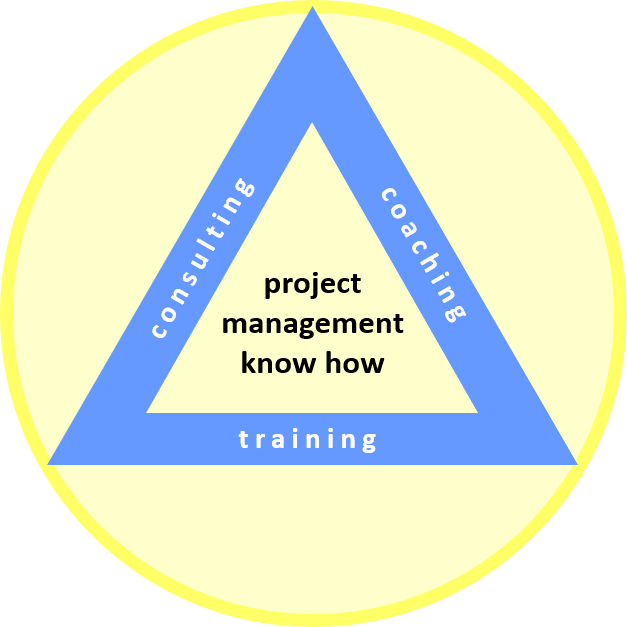PM concepts and tools explained, helping you to understand and apply them
Menu
TEST 4
Lesson 4
Test 4
(Test 4 combines knowledge of all previous lessons.)
Question 1: Refer to the basic control cycle of project management, what options we have in case actual results deviate from required results. Which of the following statements is correct?
- We can change the plan or the goal.
- We can change the requirements or the goal.
- We can change our approach to perform the work of the corresponding work packages.
- (A) Only statements 1 and 2 are correct.
- (B) Only statements 2 and 3 are correct.
- (C) Only statements 1 and 3 are correct.
- (D) All 3 statements are correct.
Question 2: What would be the right order of changes we try, in case actual results deviate from required results?
- (A) 1st Change the plan, 2nd change the approach to the corresponding work packages.
- (B) 1st Change the goal, 2nd change the plan.
- (C) 1st Change the approach to the corresponding work packages, 2nd change the plan, 3rd change the requirements.
- (D) 1st Change the plan, 2nd change the goal.
Question 3: What are our basic controlling tools?
- (A) WBS, network diagram, Gantt chart, plan of accumulated cost.
- (B) Description of work of a work package.
- (C) The critical path.
- (D) The project status report.
Question 4: Given the following small sub-section of a Gantt chart, what can we read from it?

- (A) Work packages 1.4.1 and 1.4.2 will be finished 4 days late.
- (B) Work packages 1.4.1 and 1.4.2 are finished already.
- (C) Work package 1.4.1 was started 1 day late and finished 4 days late; work package 1.4.2 was started 4 days late and is still in progress.
- (D) Work package 1.4.1 took 8 days of effort, work package 1.4.2 will take 6 days of effort.
Question 5: Here in test 4, we refer to our desk example, event 1, the actual length of the desk top plate after cutting is 198 cm instead of 200 cm. What would have been a preventive action to avoid time delay without changing the specification?
- (A) Cut a small piece of 2 cm x 90 cm x 4 cm and glue it to the 198 cm piece.
- (B) Buy an extra plate of 210 cm x 90 cm x 4 cm in the beginning to enable a second attempt.
- (C) Ask the hardware store if they could cut all the plates to our specifications.
Question 6: Referring to that same event 1, what would have been another corrective action allowing for a small time delay at minimum extra cost, but still keeping the specifications?
- (A) Cut a small piece of 2 cm x 90 cm x 4 cm and glue it to the 198 cm piece.
- (B) Go back to the hardware store and buy another 210 cm plate.
- (C) Repeat the cut with the other 210 cm plate and take the wrong one for the side plates.
Question 7: Given the fact that we cannot plan for every eventuality, what does this mean for the triple constraint of project management? (we refer from test 4 to lesson 1.)
- (A) Un-planned events in implementation phase trigger decisicions that influence scope, schedule and budget of a project.
- (B) We do not need to plan scope, schedule and budget, we just do it.
- (C) In implementation phase, we always minimize time delays.
- (D) There is no project without time delay and extra cost.
Return from Test 4 to Home Page
|
|
|

Your Comments
Have your say about what you just read! Leave me a comment in the box below.